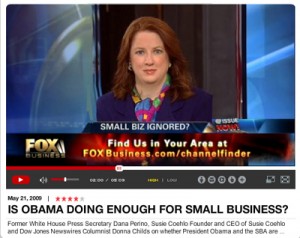
The Best Plans
I had a rather unusual experience with the medical examination required for me to travel for the United Nations Capital Development Fund. On behalf of my first business, Childs Capital LLC, I had accepted an assignment to serve as the Senior Policy Advisor to the United Nations Advisors Group on Inclusive Financial Sectors. This was a follow-on initiative to the UN’s International Year of Microcredit with the goal of expanding access to finance for the poorest people in the developing world. I traveled a great deal for the UN on this assignment, working on projects in Kenya, India and elsewhere. The UN requires medical clearance prior to beginning the contract, including an echocardiogram, which I had performed at the New York Downtown Hospital. The doctor expressed concern about the abnormal results and wondered if I was stressed about anything. Indeed, I was! Next door to the hospital was a construction site with dynamite chargers going off every 3.5 seconds. (I know; I was counting while lying on the examining table with the electrodes attached to my chest.)
After 9-11, billions of dollars in stimulus aid went to subsidize construction projects in Lower Manhattan, apparently in the belief that “if you build it, they will come”. The site adjacent to New York’s Downtown Hospital was to become the Beekman Tower, a Frank Gehry-designed luxury rental building in Lower Manhattan with about 900 apartments. This was part of a grand plan to make the financial district a “24-hour community”. I could never understand why anyone would want to live in this area. Even now, after all of the billions of dollars that went into these schemes, it is very difficult to buy a newspaper on a Sunday morning in that neighborhood or to find a restaurant that keeps its kitchen open past nine in the evening. It seemed to me the height of arrogance that one would think that central planning would work here where it has failed everywhere else. I was never convinced that policymakers in New York or Washington were any smarter than their counterparts in Moscow, whose economic plans have long since been discredited.
Construction on the foundation of the Beekman Tower began in 2006. Now, in 2009, construction is not finished and the real estate developer has cut this tower from 76 stories to 38, one-half of the height originally planned for this luxury rental building. “Given the current economy, we are conducting a study to assess costs, risks and overall timing,” announced the real estate developer in a written statement. “Work is continuing on the building including on the school and we should have some conclusive answers shortly.” The developer added that work will continue on the lower stories, but added that no additional floors will be added pending an evaluation of costs. Just last year, Forest City Ratner, the real estate developer, obtained $680 million in financing for this project, which was the largest construction loan in its history. It was seen as one of the few projects in New York City that was bucking the overall real estate meltdown as construction continued.
Now, of course, the world has changed. The financial system of the U.S. is effectively insolvent. Certain of the largest employers in the financial district, such as Merrill Lynch, no longer exist. Others, such as AIG, are struggling. Lower Manhattan faces an economic crisis more severe than that caused by the events of 9-11. The irony is that resilient small businesses in the financial district, including my own, were displaced for these “grand scheme” projects that were never really viable in the first place. So now we will create jobs, expand the tax base and support local charities in communities other than Lower Manhattan, leaving behind these half-completed construction projects. The Beekman Tower is not the only Lower Manhattan construction project that has run into trouble. AIG is attempting to arrange a sale-leaseback of two of its Lower Manhattan office buildings, an arrangement that is becoming increasingly popular in a soft real estate market. Both the New York Times Corp. and Citigroup have arranged sale-leaseback transactions for certain of their properties. And the developer of the properties at the World Trade Center site, Larry Silverstein, is reported to be seeking a bailout from the New York Port Authority, which has cash flow problems of its own.
Small businesses were displaced to make way for the New York Times Corp. to build its spectacular new headquarters, in an abuse of eminent domain seizures following the Supreme Court’s landmark Kelo decision. I wonder how different things would be in Lower Manhattan if market mechanisms had been allowed to work through the post-9/11 recovery, if public subsidies to large corporations had not been granted and if the small businesses, which continue to create jobs, would have been left to do our work in peace. These lessons appear to be lost on our policymakers in Washington as they seek to defend the latest outrage in corporate welfare and federal bailouts.
P.S. Nobel Prize-winning economist Gary Becker gave an insightful interview in which he argued that many of the government’s stimulus programs, to mitigate the impact of disaster, are counterproductive.







